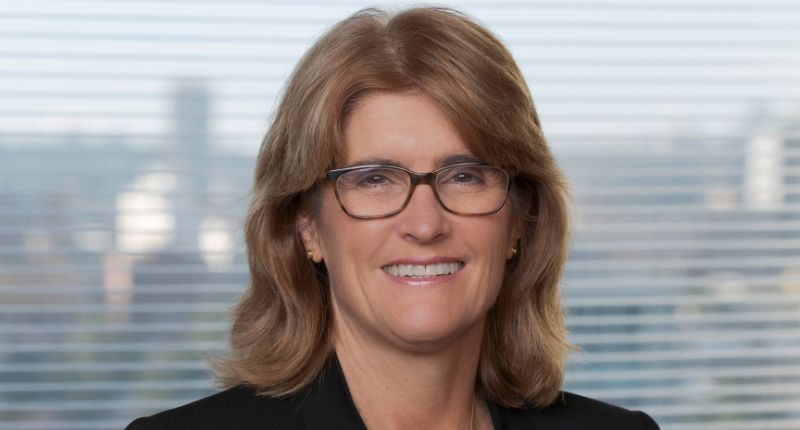- The official cash rate remains at 4.10% for the fourth consecutive month.
- Experts observed global fears of inflation remaining sticky.
- Today’s decision gives buyers with pre-approvals some confidence, said expert.
The Reserve Bank of Australia (RBA) has kept the official cash rate at 4.10% for the fourth consecutive month.
New RBA governor, Michele Bullock, said in a statement that:
“The higher interest rates are working to establish a more sustainable balance between supply and demand in the economy and will continue to do so.”
“In light of this and the uncertainty surrounding the economic outlook, the Board again decided to hold interest rates steady this month.”
Michele Bullock, RBA
“This will provide further time to assess the impact of the increase in interest rates to date and the economic outlook,” she added.
Bullock noted that while inflation in Australia has passed the peak, it remains too high and will remain so for some time yet.
“The central forecast is for CPI inflation to continue to decline and to be back within the 2–3 per cent target range in late 2025.”
“Growth in the Australian economy was a little stronger than expected over the first half of the year. But the economy is still experiencing a period of below-trend growth and this is expected to continue for a while,” said Bullock.
“High inflation is weighing on people’s real incomes and household consumption growth is weak, as is dwelling investment. Notwithstanding this, conditions in the labour market remain tight, although they have eased a little.
“Given that the economy and employment are forecast to grow below trend, the unemployment rate is expected to rise gradually to around 4.5% late next year. Wages growth has picked up over the past year but is still consistent with the inflation target, provided that productivity growth picks up.”
Hold comes despite rising inflation
“Inflation rose in August, reversing a downward trend that has been in place since April,” said Ray White chief economist, Nerida Conisbee.
“At 5.2%, the inflation rate is still well outside the 2%-3% band that the RBA aims for. Despite this, rates remained on hold this month.
“The increase in inflation reminds us that we still have some way to go and that there is still potential for more rate rises.”
Nerida Conisbee, Ray White
“For now, market pricing for the peak continues to change from week to week, as does the timing of cuts.
“Globally we are continuing to see rates on hold however there remain concerns around inflation remaining sticky. In the US, the Federal Reserve left interest rates on hold this month after inflation increased slightly but did warn that it would keep increasing if need be. Nevertheless, markets are expecting cuts to start towards the end of next year.
“Surprisingly UK inflation is coming down, despite stubbornly rising power prices. The Bank of England maintained rates, ending a run of 14 consecutive rate rises even though inflation remains a lot higher than other countries.”
Property markets to rejoice as rates on hold
Buyer turnout at auctions and open homes will continue to rise following today’s decision by the Reserve Bank of Australia Board to keep the official cash rate on hold, according to the LJ Hooker Group.
August’s headline inflation rate increased to 5.2% – up from 4.9% the previous month – but the increase was mainly attributed to rising fuel costs, propelled by global supplies.
LJ Hooker head of research, Mathew Tiller, said with underlying inflation continuing to fall, the Board likely considered the latest increase in headline inflation a blip in the overall downward trend.
“The RBA is watching the economic data closely and has indicated it won’t rule out further cash rate hikes if the downward trend in inflation slows or reverses,” said Tiller.
“Today’s decision gives buyers with pre-approvals the confidence to table offers and bid at auction knowing they can meet serviceability levels of their loan.”
Mathew Tiller, LJ Hooker
“Sellers are responding to the pause in rate rises, coming to market to capture buyers’ confidence.”
New listings picked up in the opening month of the spring selling season but total listings remain well below average levels. Tiller said appraisal requests had lifted in all states.
“Auction volumes were softer last weekend due to the long weekends in most states and territories, but volumes will rebound throughout the rest of October,” said Tiller.
While rents have been increasing, there is evidence some investors are looking to sell as the gap between income and expenses widens.
“Investors looking to sell up will be welcomed news for first home buyers who generally tend to be purchasing in the same market,” Tiller said.
Consumer spending slows
“According to the consumer price index, Inflation rose 5.2% in the 12 months to August 2023, up from 4.9% in July, indicating that the disinflationary pulse stalled in August,” said PropTrack senior economist, Eleanor Creagh.
“After excluding volatile items, the annual rise in underlying inflation of 5.5% in August showed a continued moderation. Despite the lift in August, inflation is expected to continue moving lower with the weakening in household consumption and slowing economic activity.
“The significant increase in mortgage servicing costs, together with cost-of-living pressures, has seen consumer spending slow and weigh on economic activity. Conditions are expected to further soften in the coming months.
“The full impact of monetary tightening to date is yet to be felt and we’re likely to continue to see inflation moving lower as a result.
“Unless there is a shift in the disinflationary outlook, it’s likely the peak in the cash rate is already in for this monetary policy tightening cycle.”
Australian house prices reverse falls
Creagh also noted that: “National home prices have now reversed last year’s price falls in their entirety, with September marking the ninth consecutive month of national home price growth.”
“One driver of the recovery in home prices this year has been the subdued listings environment, which has seen buyers competing for fewer properties. Home prices have also been underpinned by record levels of net overseas migration, a challenged rental market and an emergent housing shortfall.
“The decision by the Reserve Bank to continue holding the cash rate steady in October will underpin buyer and seller confidence for the spring selling season.”
Eleanor Creagh, PropTrack
“Looking ahead, interest rates have very likely peaked and population growth is rebounding strongly. Together with a shortage of new home builds, prices are expected to rise and more markets will likely reach new record levels after recouping last year’s fast falls.”
Inflation remains front of mind
“The recent uptick in inflation, from 4.9% annually in July to 5.5% in August, wasn’t enough to prompt a further rate hike this month,” said CoreLogic research director, Tim Lawless.
“With volatile measures stripped out, annual growth in the monthly CPI did continue to ease to 5.3% (down from 5.6%). However, clearly, inflation remains high on the RBA’s risk radar.
“Higher fuel and energy prices, alongside persistently high services and rental inflation have the potential to trigger another rate hike later this year.”
Tim Lawless, CoreLogic
“Logically, the RBA will be waiting to see September quarter inflation data, released the week ahead of the RBA’s November meeting. With this in mind, the November meeting will be closely watched.”
Lawless added that the Reserve Bank is like to be closely monitoring the housing sector, with rental pressures front of mind. Notably, the annual change in CoreLogic’s measure of market rents has been slowing since October last year. CPI rents tend to lag market rents, implying CPI rental growth could be close to peaking, Lawless noted.
“Although the RBA doesn’t directly target asset prices in their decisions, the ongoing rise in housing values across most regions of Australia could be a concern for the RBA.
“Higher housing values have the potential to keep inflation higher for longer due to the flow on from the wealth effect; if home owners feel wealthier they may be inclined to spend more.”








